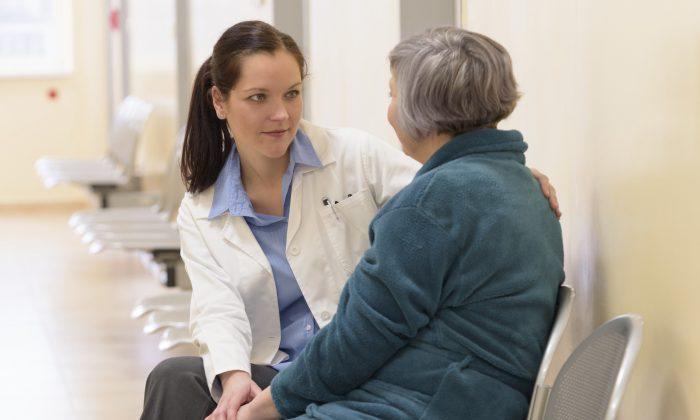Last December, Mirande Gross graduated from Bellarmine University in Louisville, Kentucky, with a bachelor’s degree in communications. But Gross has changed her mind and is heading back to school in May for a one-year accelerated nursing degree program.
“I was excited about working during the pandemic,” Gross, 22, said. “It didn’t scare me away.”
Enrollment in baccalaureate nursing programs increased nearly 6 percent in 2020, to 250,856, according to preliminary results from an annual survey of 900 nursing schools by the American Association of Colleges of Nursing.
“In the pandemic, we saw an increased visibility of nurses, and I think that’s been inspirational to many people,” said Deb Trautman, president and CEO of the association, whose members represent nursing programs at the bachelor’s, master’s, and doctoral levels. “It’s a profession where you can make a difference.”
Two-year associate nursing degree programs seem to be experiencing a similar bump, although hard numbers are unavailable, said Laura Schmidt, president of the Organization for Associate Degree Nursing.
There’s no way to know exactly what is propelling the new applications. But medical schools also saw an 18 percent boost in applications last year, a jump partly attributed to the pandemic and the high profile of key doctors, such as Dr. Anthony Fauci, director of the National Institute of Allergy and Infectious Diseases, during the crisis.
It’s possible that the media stories, social media accounts, and front-line medical workers’ personal accounts of battling the novel coronavirus have played a role. “Nurse” was the No. 1 term that people queried “how to become” on Google in 2020, according to Google trends data.
For Gross, it was a return to an initial career choice. When she started college, nursing was her chosen path. But after fainting twice while shadowing a nurse at the hospital, she switched to a major that didn’t involve needles or blood. For the past two years, she’s worked as a newborn photographer at a hospital near her Louisville home, and she no longer gets squeamish at the sight of IVs or injuries.
“When I saw on the news nurses being so overworked, I thought, ‘Gosh, I wish I could be in there helping,’” said Gross.
Meeting the demand for nurses is hampered by long-standing capacity issues at nursing schools. According to a report by the American Association of Colleges of Nursing, programs at the bachelor’s and graduate degree levels turned away more than 80,000 qualified applicants in 2019. The reasons included not having enough faculty, clinical training sites and supervisors, or classroom space, as well as budget constraints, the report found.
“The people who are prepared to teach are at least master’s degree level and frequently have doctorate degrees,” said Beverly Malone, president, and CEO of the National League for Nursing. “They can work at hospitals or community care centers for [significantly] more money.”
For some nursing students, the pandemic has opened their eyes to new possibilities for patient care. David Namnath is finishing a two-year associate nursing degree at the College of Marin in Kentfield, California. He learned last spring that his clinical rotation at the local hospital would be canceled because of COVID-19.
Instead, he and other students took on a telenursing project, in which he made regular wellness check-ins and provided health education related to chronic conditions such as diabetes and back pain with eight patients over video and phone.
“It was really helpful for me,” said Namnath, 29, who has a bachelor’s degree in biochemistry and worked in a lab before starting nursing school. “It’s not something you normally learn. I think we became more three-dimensional because of it.”
Some people who got nursing degrees in years past but didn’t practice also may be taking a fresh look at the profession, said David Benton, CEO of the National Council of State Boards of Nursing. More than 222,000 nurses who were educated in the U.S. took the National Council Licensure Examination last year, a figure that was 5 percent higher than the year before, he said.
The economic downturn that has shuttered thousands of businesses may have made nursing more attractive, he said.
“We know that, nationally, services like the restaurant industry have shut down,” Benton said. “But one thing that hasn’t shut down is demand for health care.”
There are many paths to becoming a nurse. A growing proportion of nurses get a bachelor of science degree in nursing at a four-year college. But many still go to community colleges for two-year associate degrees in nursing. These programs are more affordable and may appeal to older students who are parents or going back for a second degree, said Schmidt.
Many nursing schools have “RN to BSN” programs that enable registered nurses with associate degrees to get the additional training they need for their bachelor of nursing degrees. And numerous accelerated programs, like the one that Gross will start in May, allow people to fill in their nursing education gaps in a compressed time frame.
Not every nursing student sees the pandemic as an opportunity, however. Steven Bemben worked as a paramedic in Uvalde County, Texas, west of San Antonio, during the first frightening months of the pandemic last year. Personal protective equipment was hard to come by, and sometimes, the calls to transport very sick COVID-19 patients came nonstop.
“It was extremely stressful, and people were getting fatigued and burned out,” said Bemben, 33, who had been on the job for nine years.
Last October, he quit his paramedic job, and in January he started a two-year bachelor’s nursing program at the University of Texas-San Antonio. (He already has an associate degree, although not in nursing.)
When Bemben finishes school, he hopes, the pandemic will be in our collective rearview mirror.
“By the time I graduate, I’m trying to stay optimistic that we’ll be past all this stuff,” he said.




